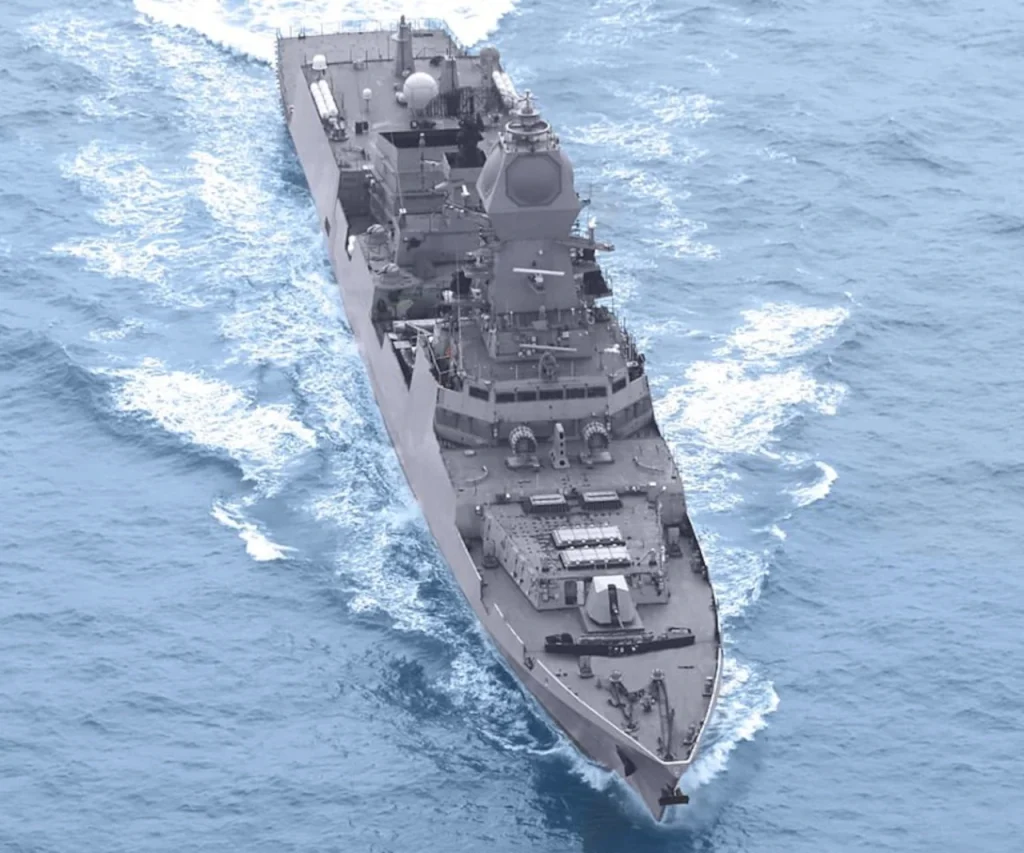Today, destroyers are one of the largest and heaviest surface combatants that dominate the world’s seas. They are enormous (5000-10000 tones) and cost over $700 million per piece. It is a warship that can protect other ships in a navy and its merchant ships. It is packed with the latest electronics and sensors and modern warfare to operate in a high level threat environment. There are powerful radars to pick up enemy missiles and combat systems that can shame the entire military capability of a small country. Guided missiles are the primary attack weapons of destroyers, although there are also anti-submarine and anti-aircraft guns deployed on a destroyer. In comparison to Frigates, destroyers are much larger and heavier.
A destroyer is mainly a fighter with guided missiles, anti-aircraft, and anti-submarine guns.
DD and DDG (guided-missile destroyer) are the abbreviations used for destroyers in the United States, depending on their attack systems and whether they are destroyers or not. Destroyers have much higher defense and attack capabilities than frigates and are significantly costlier.
Initially, India fielded destroyers made in the United Kingdom. The R-class INS Ranjit was the first Indian destroyer after independence) followed by Rajput and Rana. They were second hand ships and commissioned into the Indian Navy in 1949.
The Hunt Class Godavari, Gomati and Ganga were commissioned into the Navy in 1953. These were also second hand ships from the UK.
In 1980 and 1983, India commissioned INS Rajput and Ranjit, respectively, built in the Soviet Union. These were also called the Kashin-II class, modified versions of the Soviet Kashin-class destroyer. Rana, Ranvir and Ranvijay are the other ships of this class.
The Indian Navy currently fields ten guided-missile destroyers in four classes: Visakhapatnam, Kolkata, Delhi, and the older Rajput.
The Rajput Class was built in Russia. The oldest surviving ship of the class, INS Rana, features the older SS-N-2D Styx AShM missiles and the 30 mm AK-230 CIWS. The other two feature BrahMos aft VLS and SS-N-2D Styx AShM missiles, Barak SAM and 30 mm AK-630M CIWS. Other common weapon systems include the 76.2 mm main gun, S-125M (NATO: SA-N-1) SAM launcher, 533 mm PTA quintuple torpedo tube launcher and RBU-6000 anti-submarine mortars. Rana differs from the other two ships in sensors too.
After the Kolkata-class destroyers and the Shivalik-class frigates, the Delhi-class vessels are the third-largest warships designed and built in India. Mazagon Dock Limited in Mumbai made them. The Delhi-class design incorporates elements of the Sovremenny, Rajput, and Kashin-II-class destroyers, as well as the Godavari-class frigate.
Delhi-class ships are equipped with flag facilities to serve as command units in task groups. This is the first destroyer class to be made in India. The ships are outfitted to operate in nuclear, biological, and chemical warfare environments. It is armed with Kh-35 Switchblade (SS-N-25) SSM. The Delhi class is equipped with a 9K-90 Uragan air-defence system consisting of 3S-90 single-arm launchers and 9M38M1 Shtil missiles for primary air defence. The Rafael Barak 1 point air defence missile system is being installed on the Delhi class. The class consists of Delhi, Mysore and Mumbai.
All three above have sonars and torpedoes for underwater operations.

The Kolkata class (Project 15A) consists of three guided missile destroyers with stealth technology: Kolkata, Kochi, and Chennai. The Kolkata class is comparable to the previous Delhi class but with upgraded weaponry, sensors, and helicopter systems. BrahMos anti-ship and land-attack missiles are the primary attack weapons. The CIWS Barak 8 and AK-630 are designed for air defence. The 76 mm (3.0 in) gun can even be used for land attacks. It has Bharat Electronics Limited’s electronic modular command and control applications (EMCCA) Mk4 for combat management.
The Visakhapatnam class (Project 15B) is a class of stealth guided missile destroyers under construction. An improved version of the Kolkata class INS Vishakhapatnam is 163 meters long for a width of 17.4 meters and a fully loaded displacement of almost 9000 tons. The Visakhapatnam is manned by 300 crew members and must be able to exceed the speed of 30 knots. It is equipped with a radar with four fixed panels, an active antenna EL/M2248 MF-Star from the Israeli group IAI, a rotating radar LW-08 from Thales, and an Indian-made hull sonar. Its armament includes Barak-8 surface-to-air missiles and BrahMos missiles for anti-ship and land strike capability. Added is a 76 mm turret from the Italian OTO-Melara, four Russian AK-630M multitude systems, four torpedo tubes and two RBU-6000 anti-submarine rocket launchers.
A total of four Visakhapatnam-class destroyers have been ordered. The lead ship is already commissioned. The second one Murmogoa is under trial. The third destroyer, the Imphal, and the fourth Porbandar are still in various stages of construction.
India’s main rival has 45 destroyers, of which 36 can be termed modern, including the Lanzhou class, Kunming class and the 055. Type 052, 956E, 956EM, 051C and 051B are the older class of destroyer. India’s immediate threat Pakistan does not has any destroyer.
